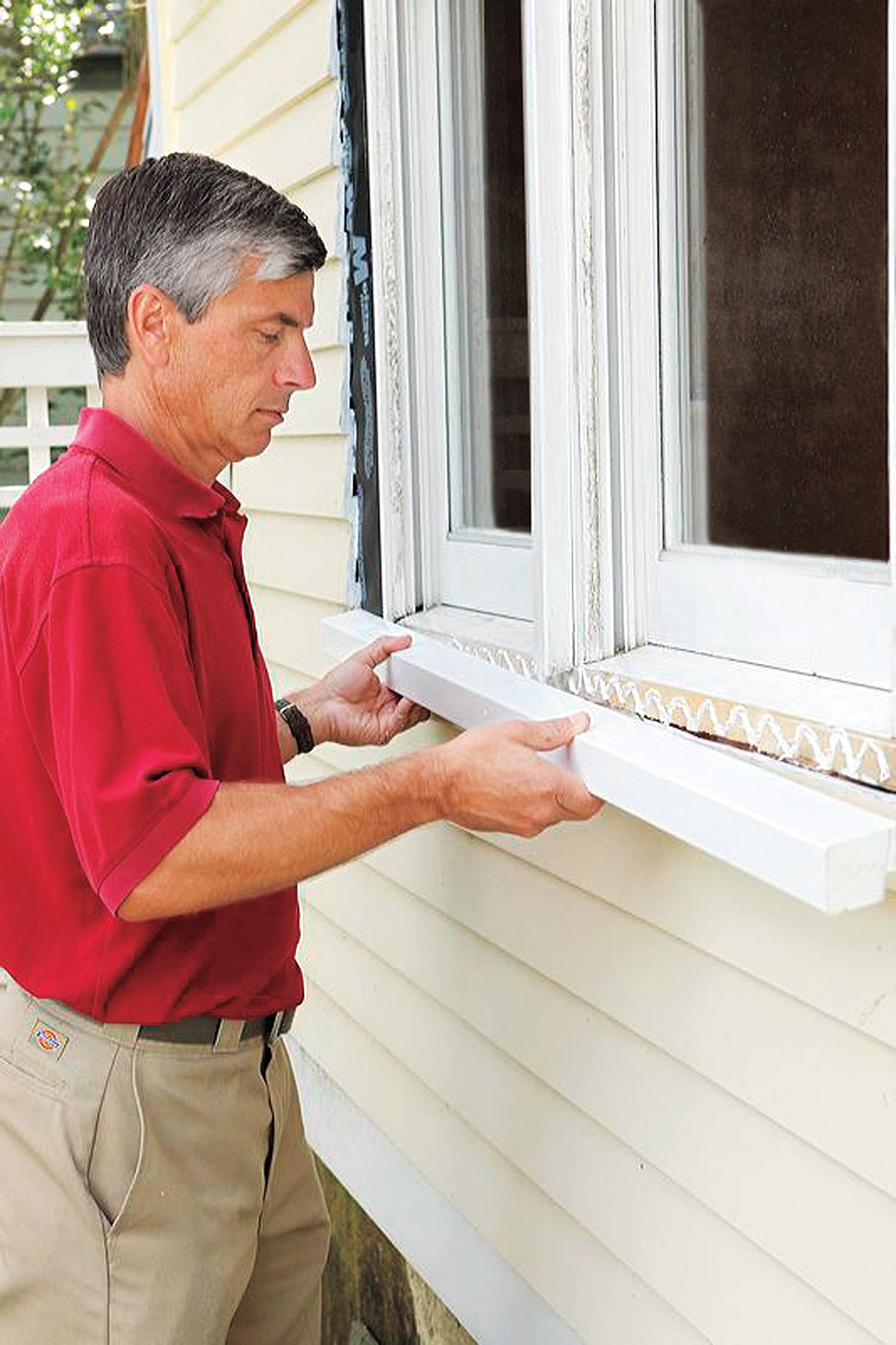Project details
Skill
Cost
Estimated Time
 Circular saw
Circular saw Multitool
Multitool Drill/driver
Drill/driver Hammer
Hammer Flat pry bar
Flat pry bar
Q: One of our windowsills appears to be rotting. Can it be replaced without buying a new window?
—Bill Bailey, Baldwin, Mo.
David Raymond, Raymond Design Builders, replies: Sticking out into the weather year after year, wood windowsills take quite a beating. They can last for decades if you just keep them clean and protect them with a coat of paint. But when water gets trapped in or against them, as happens with improperly flashed windows, rot can take hold.
A simple epoxy repair will do the trick if the rot is confined to a small area, but if more than 10 percent of the sill is rotten, the old sill should be cut off and replaced. For this project, I used a solid piece of Kleer cellular PVC sill that matches the profile and thickness of the other sills on the house. It costs less than a piece of clear, milled red cedar and is paintable, but no matter how many times it gets wet, it can’t rot.
Step-by-step tutorial renders beneath OTHER VIDEOS player. Keep scrolling!
Step 1
Remove the Side Casings

The casing comes off to clear the way for removing the old sill. If the casings are rotting, as here, replace them, too. Slice through the caulk bead between the siding and the casing, then carefully pry off each piece. Save the trim to use as templates for the new ones. Make sure the flashing behind the casing is intact and properly installed behind the siding.
Step 2
Saw Off the Old Sill
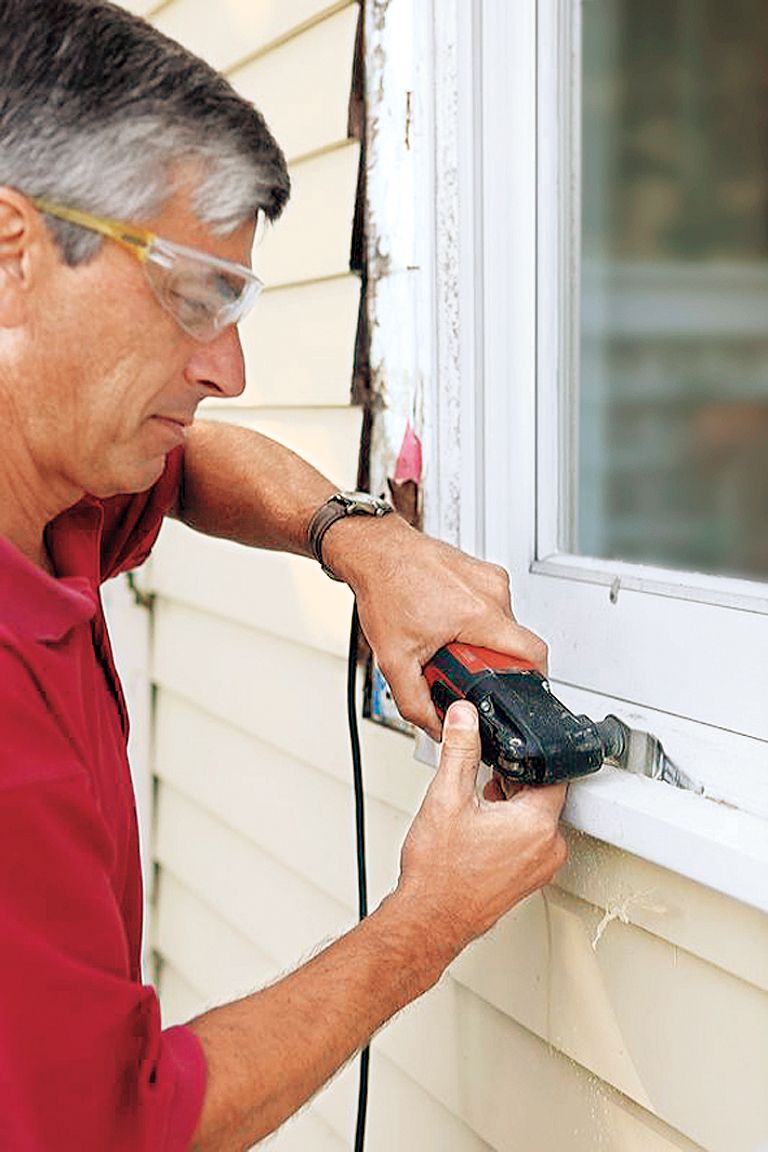
Make a plumb cut flush with the sheathing along the length of the rotten sill. A circular saw with a beveled blade can handle most of the cutting, but for the sill ends where a circ saw can’t reach, switch to a multitool, like this Fein Multimaster equipped with an oscillating saw blade. Smooth the cut with a few strokes of a hand plane.
Step 3
Apply the Adhesive
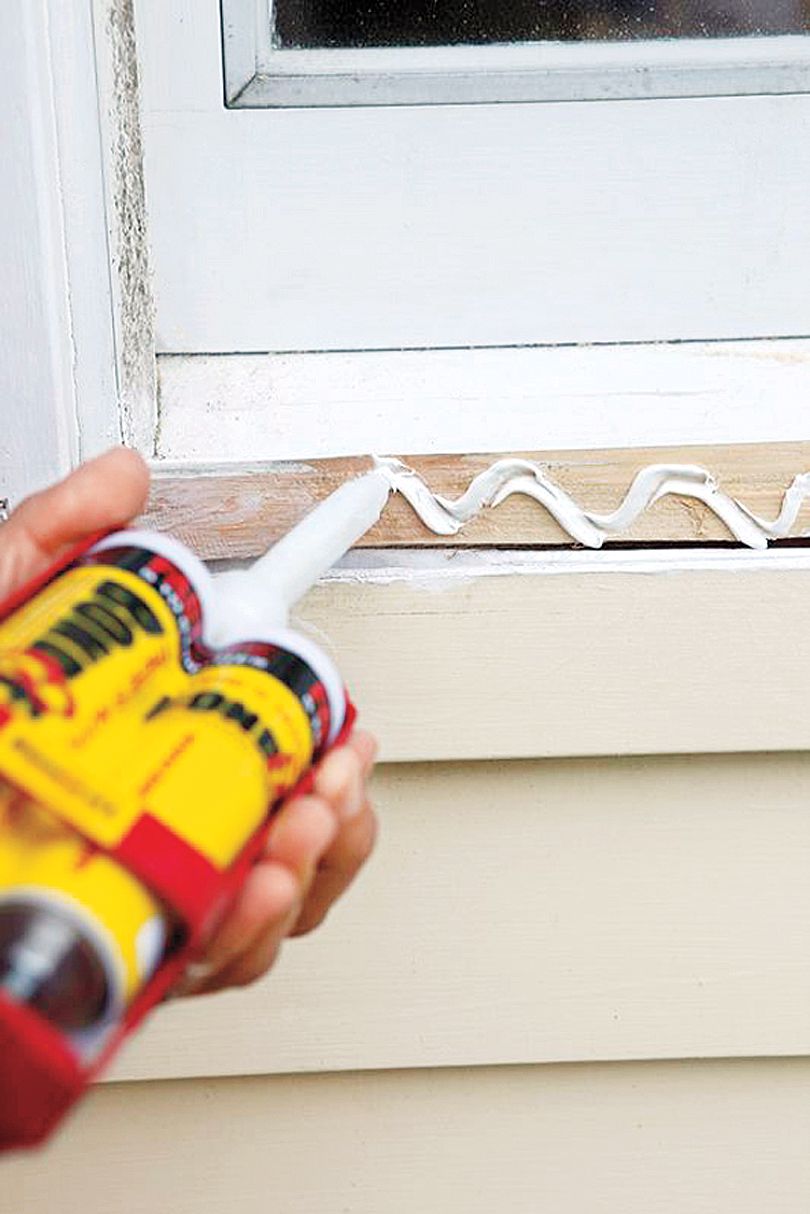
Repair any rotten spots on the old sill with epoxy. Trim the back edge of the new sill as needed so that its lower edge fits tightly against the siding and its back edge fits against the old wood. Drill pilot holes every 16 inches or so through the new sill’s front and back edges. Run a bead of waterproof, marine-grade adhesive along the old sill.
Step 4
Attach the New Sill
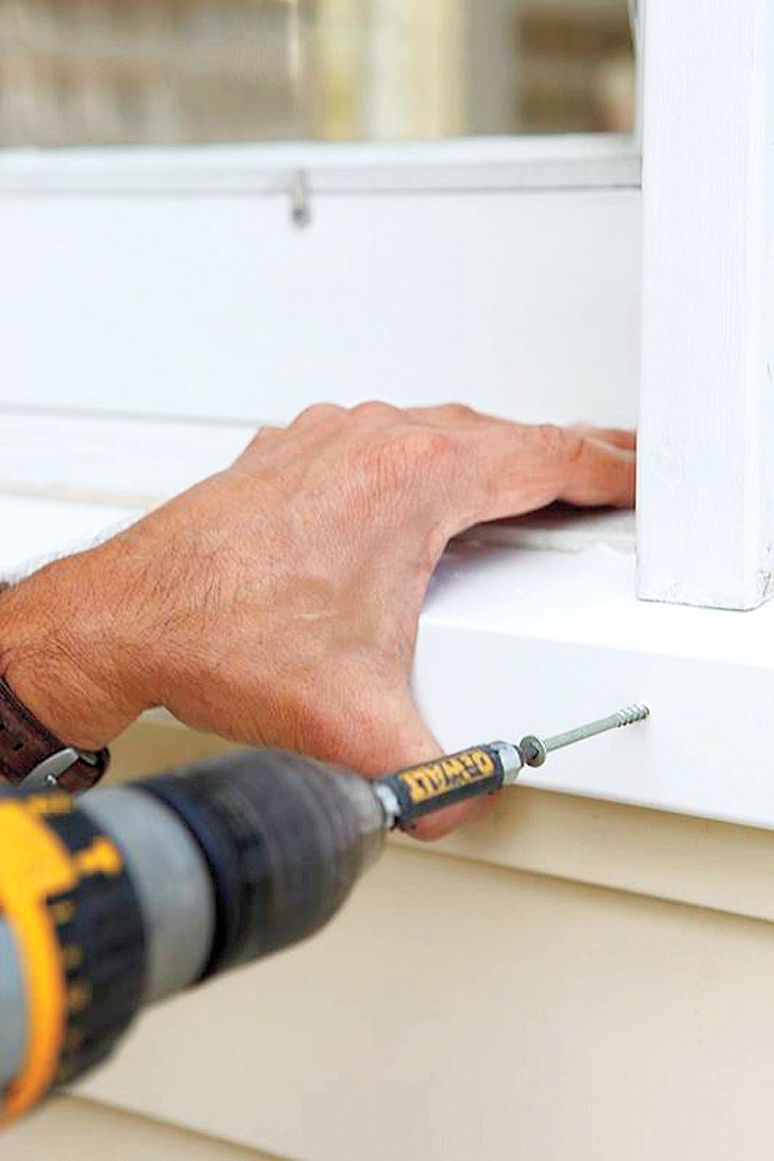
Press the new sill into the adhesive, and immediately clamp it in place by driving 3½-inch deck screws through the plastic and into the wood. Stop when the heads are about ¼ inch below the sill surface. Immediately wipe up any adhesive that squeezes out. Fill any gaps between the old and new sill with adhesive.
Step 5
Hide the Screwheads
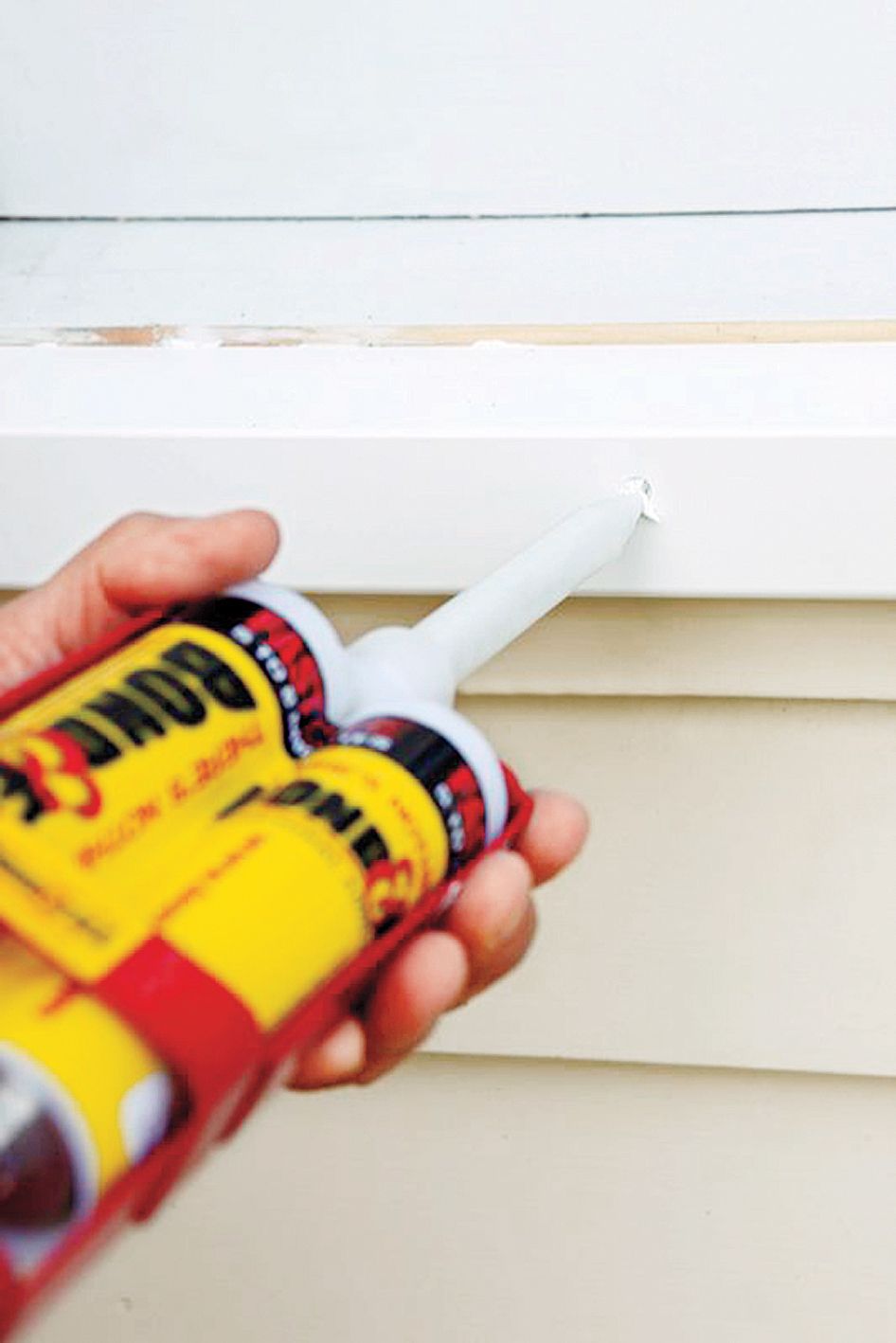
Cover each screwhead with a dollop of a white, two-part acrylic adhesive, such as Bond&Fill FastCure. (This also works as an adhesive in Step 3.) Overfill the recess slightly. When the adhesive hardens completely, in about 30 minutes, sand it flush.
Step 6
Install the Side Casing

Squeeze a bead of caulk beside the ends of the siding, and nail the new casing in place. Here, I used cellular PVC trim boards and 8d stainless-steel ring-shank nails. Set the nailheads slightly below the surface, and cover each one with a dab of the two-part adhesive. After the dabs harden, sand them flush.
